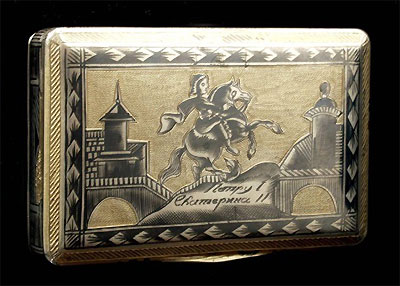Artists of besieged Leningrad
 In the city on the Neva, in the House of Artists, in front of the entrance to the exhibition halls hangs a large marble plaque. On it are carved the names of those killed in the Great Patriotic War. More than 150 artists …
In the city on the Neva, in the House of Artists, in front of the entrance to the exhibition halls hangs a large marble plaque. On it are carved the names of those killed in the Great Patriotic War. More than 150 artists …
1941 Winter blockade bombing. Shelling, hunger, cold. Uncountable thousands of deaths …A series of endless dark days, the most tragic and courageous among the nine hundred unprecedented days of the blockade. The city seemed extinct. The deserted streets were covered with snow, blackened frozen masses of houses, broken wires hung lifelessly, trolley buses and trams were frozen into snowdrifts.
There was no bread, light, heat, water. Nevertheless, Leningrad lived and fought heroically. In the icy workshops of factories, exhausted people made weapons, tanks, projectiles for the front. During the blockade nights under brutal bombardments and shelling, anti-aircraft defense teams from the same Leningrad residents who were barely able to stand were on duty on the rooftops, fighting fires, dismantling the ruins.
And in the mornings posters appeared on the walls of the houses. The bright, smelling with fresh typographical paint sheets branded the enemy, appealed for revenge, claimed faith in the Victory, helped to live and fight. They were very necessary then to people. It is unlikely that contemporary young artists can fully imagine the conditions under which these posters were executed then …
Herzen Street 38. In the frozen rooms of this house of the Leningrad Union of Artists, there was a special, busy life during the blockade. The spacious room with two high halls, with large, once bright workshops has become unrecognizable. In the corners there was nothing out of which the beds were taken, the stoves were heated- “stoves”, the smoke-lamps burned. A weak flame snatched thin, pale faces from the darkness. Gloved hands barely held their hands, cold paint had to be warmed by breathing. But the artists worked. Worked with amazing energy, perseverance, passion.
From the first day of the war, artists together with all Leningraders built defensive structures, worked on logging, and underwent military training in air defense teams. More than a hundred people went to the front. Many fought in the militia. Everyone wanted to defend their hometown in arms. Some then decided that the skills of the artist during the war, no one needs. But at the end of June 1941, a large group of painters from the military command called for work to disguise military installations, above all airfields. They also masked the monuments of the city’s museum, sheltering monumental sculptures on the famous quays and squares of Leningrad from the fragments of bombs and shells. Hands, able to handle works of art, were also needed for urgent packing of the treasures of the Hermitage and the Russian Museum for evacuation. The artists who survived the blockade recollect, with what trepidation and heartache they helped museum staff to remove precious canvas from subframes, how bitter it was to see the empty frames on the walls of famous halls …
And although these matters were important and necessary, the besieged residents then waited from them for an operational, combative creative response to the events of the life of the fighting city. The creation of works of mass propaganda art has become a necessity. To accomplish this crucial task, many leading artists were even withdrawn from the front. At the time, the large canvases that had been started turned to the walls, the peace sheets of book illustrations remained unfinished. And even artists who have never tried their forces in the field of agidelo selflessly and ardently.
On the third day of the war, the first poster of V. Serov “Beat, beat and we will beat!” Was published. Behind him appeared sharp, smashing posters of V. Lebedev “He ran”, A. Lyubimov “N-yes, Adolf, you have something wrong here …”, A. Kazantsev “Help”, I. Silver and others .
At the same time, a large group of art masters began to work in the “Fighting Pencil”. They produced multi-sheets and posters. Satirical images were accompanied by text, as a rule, in verse. The core of the “Battle Pencil” was composed by the charts I. Astapov, V. Kurdov, N. Muratov, nicknamed by his comrades in the work of “three heroes”. Artists Yu. Petrov, V. Galba, N. Bylyev, I. Ets, Ya. Nikolaev worked alongside them. The texts were written by the poets N. Tikhonov, V. Sayanov, A. Prokofiev. Posters were very popular among the people of Leningrad. Sent them to the front, in dugouts, trenches, on the ships of the Baltic Fleet.
June 24, 1941 on Nevsky Prospect, in the shop window, the first “TASS Window” appeared. Everyone then remembered the famous “Windows of GROWTH” by V. Mayakovsky during the civil war. The TASS Windows continued this glorious tradition. They were compiled from topical posters and caricatures, from daily reports of the Soviet Information Bureau.




